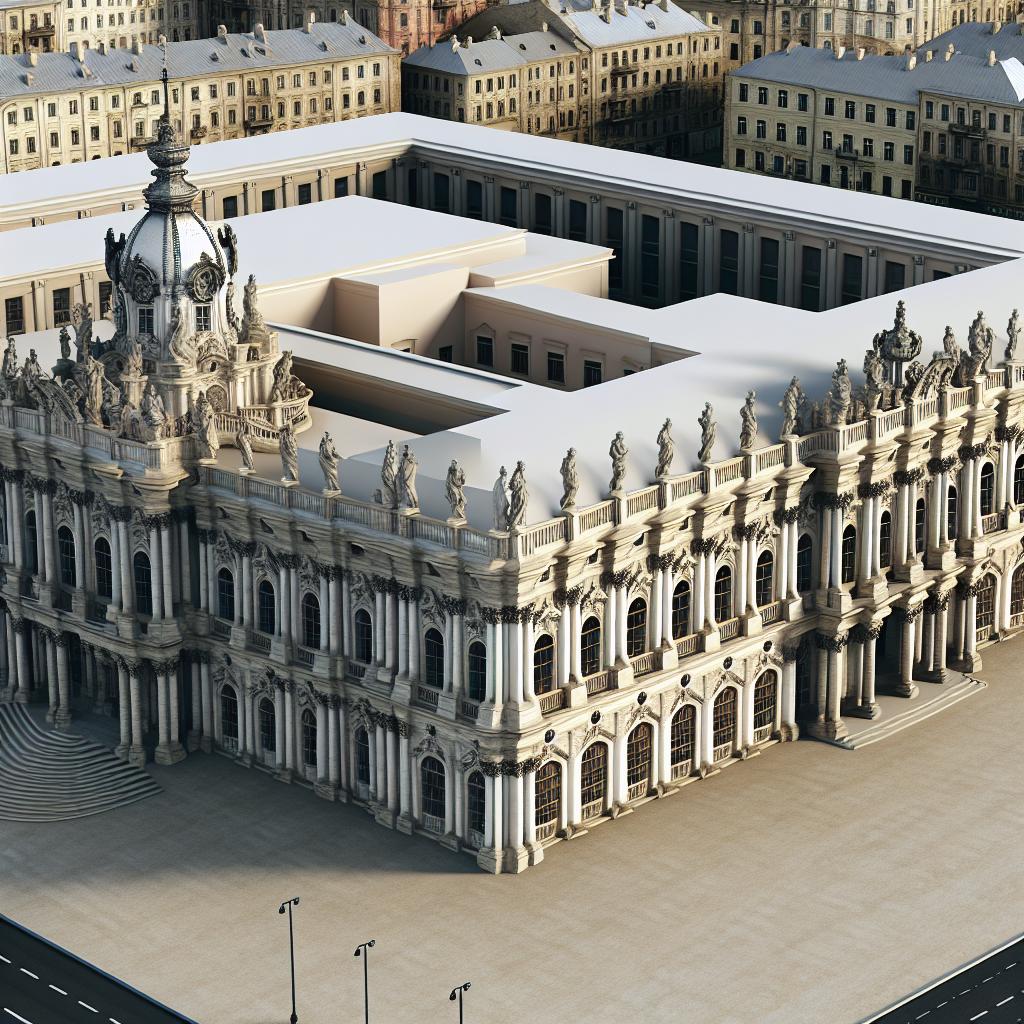The Grandmaster’s Palace: A Historical Overview
The Grandmaster’s Palace, nestled in the bustling heart of Valletta, Malta, serves as a poignant testament to the island’s multifaceted history and its prowess in the realm of architecture. This historical edifice, erected in the 16th century, originally functioned as the official domicile of the Grand Master of the Order of St. John. Today, while retaining its historical allure, it also serves a dual purpose: a splendid attraction for those interested in history, and a key building in Malta’s government operations.
Architectural Significance
The Grandmaster’s Palace stands as a quintessential example of Baroque architectural design. This style, celebrated for its grandeur and attention to detail, is manifest in the palace’s façade, which boasts clean lines and symmetrical patterns, hallmarks of the buildings constructed during the reign of the Knights of St. John. Venturing inside, one’s eyes are immediately drawn to the lavish halls and ornate decorations. The interiors themselves are an exhibition of history, with tapestries, frescoes, and artworks that speak volumes of its historical gravitas and the artistic tastes of the Knights.
The State Rooms
A highlight of the Grandmaster’s Palace is undoubtedly the state rooms. These rooms are a showcase of affluence and history, adorned with intricate tapestries and art pieces. Among these, the Council Chamber and the Throne Room stand out. These spaces embody the opulence appropriate for a seat of power. Notably, the Council Chamber features a stunning collection of Gobelins tapestries that illustrate exotic scenes from the new world, providing both visual splendor and historical insight.
The Armoury
Equally captivating is the Palace Armoury, an integral component of the Grandmaster’s Palace. This section harbors an extensive collection of armaments used by the Knights of St. John in their numerous military engagements. The collection is renowned for its comprehensiveness and offers a revealing glimpse into the military strategies and tools of the Knights. Within the armoury, visitors can admire a variety of weaponry, ranging from suits of armor and swords to firearms, each piece narrating stories of the past.
Role in Modern Times
In contemporary times, the Grandmaster’s Palace retains its relevance, serving not only as a historical site but also as a linchpin in Malta’s governmental structure. It is the location of the Office of the President of Malta and frequently serves as the venue for official events and state ceremonies. Despite its indispensable function in modern administration, many historical areas of the palace are open to visitors. This blend of old and new offers guests the unique opportunity to immerse themselves in Malta’s heritage while observing its role in present-day governance.
Visiting Information
For those visiting Valletta, access to the Grandmaster’s Palace is conveniently straightforward, as it is positioned prominently in the city center. It is, however, recommended that potential visitors check for any updates on opening hours via Heritage Malta. This is particularly advisable because certain areas may be requisitioned for official functions and, as a result, may be temporarily inaccessible. A tour through the palace provides a thorough exploration of Maltese history, offering insights into the pivotal and enduring legacy of the Knights of St. John.
The Palace’s Origins and Construction
Delving deeper into the origins of the Grandmaster’s Palace, it becomes clear that its construction was a defining moment in Malta’s architectural evolution. The palace was begun shortly after the establishment of Valletta, with plans masterminded by notable architects of the time, including Girolamo Cassar. Cassar, noted for designing many of Valletta’s principal edifices, was instrumental in shaping the city’s aesthetic, and the Grandmaster’s Palace was to be the jewel in the crown of this new baroque city.
Historical Context
During the time of its construction, Malta was under the steerage of the Knights of St. John, a powerful and wealthy order that wielded significant influence across the Mediterranean. The Grandmaster and his retinue required a residence befitting their status, which the palace admirably provided. Built over several decades, the architectural ambition of the Knights is reflected not just in its grandeur but also in the adaptability seen over subsequent centuries where structural changes have mirrored shifting political and social narratives.
A Center of Power and Governance
Throughout its history, the Grandmaster’s Palace has been more than a residence; it has been a symbol of power. As the seat of the Grand Master, it played a crucial role in the administrative operations of the order. Moreover, the palace has hosted important meetings, state discussions, and served as the residence for visiting dignitaries. Over the centuries, the palace has adapted to the island’s political transformations, including the British colonial period and subsequently the independence of Malta.
The Palace Courtyards
Inside, the architectural narrative continues with the palace’s courtyards, which add to its splendor. The principal courtyard, known as Neptune’s Courtyard, captivates with its central fountain and lush surroundings, acting as a tranquil oasis amidst the building’s more formal interiors. These courtyards have historically been used for various public and private events, highlighting their ongoing functional importance.
Preservation and Legacy
Today, the Grandmaster’s Palace is preserved with great care, ensuring that its historical essence remains intact for future generations. Various conservation projects have been undertaken to restore and maintain the artwork, tapestries, and furnishings that are central to its allure. The palace is not only a monument of historical and artistic significance but also a symbol of Malta’s enduring commitment to preserving its cultural heritage.
Educational Endeavors
The palace also functions as an educational tool, offering individuals and groups insight into Malta’s rich past. Guided tours and informational displays within the palace provide context and enhance understanding of its historical narratives. These efforts, spearheaded by heritage organizations, ensure that visitors can appreciate both the aesthetic and historical value of the site.
In conclusion, the Grandmaster’s Palace stands as a silent witness to the passage of time, encapsulating in its walls the stories of power, artistry, and progress that have shaped Malta. It remains a bastion of historical intrigue and cultural significance, inviting all who enter to partake in its storied past and vibrant present.

